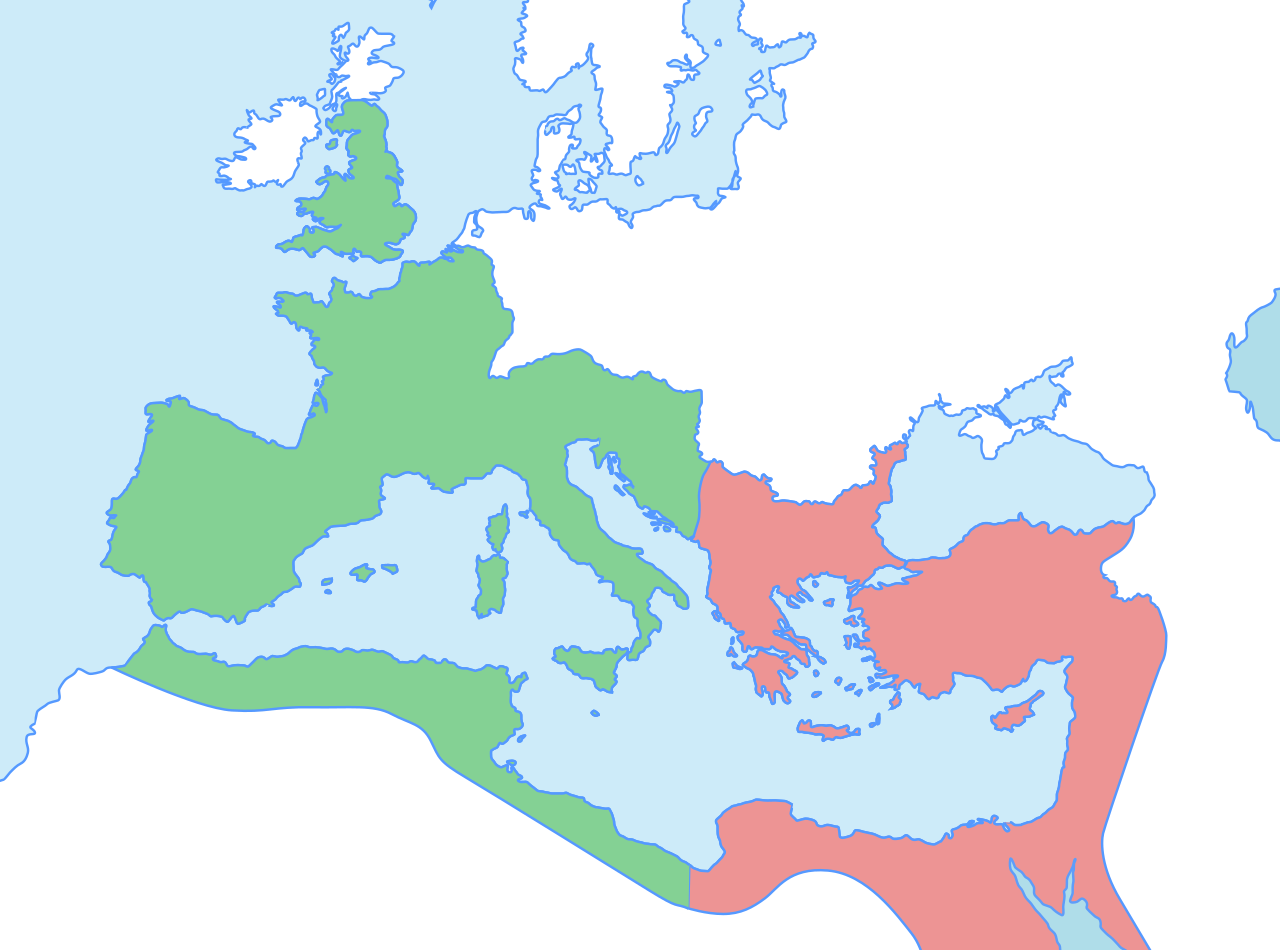Byzantine Art
The story of the Byzantine empire is the story of the Roman empire in the east. When speaking of west and east in reference to the Roman empire, the “West” roughly corresponds to western Europe and “East” to the Middle East and Slavic lands. In 330 Constantine established Constantinople in modern day Istanbul, Turkey, which became Rome’s capital in the east. The fate of the two parts of the empire were very different. This module concerns itself with what happened in the east. The name Byzantine relates to the early Greek name of Constantinople, Byzantium. For historical purposes it refers to the Roman empire in the East from the 5th century to 1453.
A commonly asked historical “what if?” is what the world would have looked like if the Roman Empire had never collapsed. In a way, we can answer that question by looking at the Byzantines. The collapse of the Roman Empire in the year 476 only refers to the end of the Roman state as it existed ruled from the city of Rome. By that time, however, the Roman Empire had already existed as two entities — one in the west and another governed from Constantinople, now Istanbul. And while the Western empire succumbed to a number of stressors including barbarian invasions, economic troubles and corruption, the Eastern Roman Empire continued on without interruption, now calling itself the Byzantine Empire. The average Byzantine citizen continued to refer to their empire and to themselves as Roman, because to them Rome wasn’t an ethnicity or a nation defined by geography — it was an Idea.


